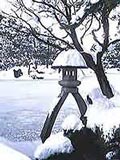|
|
|
 |
Popular
Places |
 The
Ishikawa prefecture is a wonderful blend of both cultural and historical
sights, along with an immense show of natural beauty. There is Kanazawa
with its excellent collection of museums, traditional architecture, and
one of Japan's most famous gardens. The prefecture also boasts of the
beautiful seascapes, hills, and fishing villages in the Noto-hanto Peninsula.
Those who love the outdoors will enjoy hiking around Hakusan National
Park, which is near the southern tip of the prefecture. The
Ishikawa prefecture is a wonderful blend of both cultural and historical
sights, along with an immense show of natural beauty. There is Kanazawa
with its excellent collection of museums, traditional architecture, and
one of Japan's most famous gardens. The prefecture also boasts of the
beautiful seascapes, hills, and fishing villages in the Noto-hanto Peninsula.
Those who love the outdoors will enjoy hiking around Hakusan National
Park, which is near the southern tip of the prefecture.
 In
1583, Kanazawa became the power base of the Maeda clan, which ruled the
city for almost three centuries. The wealth of the city grew so large
that it was able to pursue a cultural and artistic lifestyle, thus making
it one of the key cultural centers in Japan. However, as the capital of
Ishikawa, Kanazawa does have its own share of urban architecture and modernization
has taken its toll. Nevertheless, it continues to feature its culture
through its past architecture, including the Kenrokuen, which is one of
Japan's most famous gardens. In
1583, Kanazawa became the power base of the Maeda clan, which ruled the
city for almost three centuries. The wealth of the city grew so large
that it was able to pursue a cultural and artistic lifestyle, thus making
it one of the key cultural centers in Japan. However, as the capital of
Ishikawa, Kanazawa does have its own share of urban architecture and modernization
has taken its toll. Nevertheless, it continues to feature its culture
through its past architecture, including the Kenrokuen, which is one of
Japan's most famous gardens.
Getting
There - Visitors can fly to the
Kanazawa airport from Tokyo, Sendai, Fukuoka, and Sapporo. The airport
also has international connections with Seoul. Apart from air services,
the JR Hokuriku line trains serve Kanazawa, which links the city with
southwestern destinations such as Osaka, and northeastern destination
such as Toyama.
Getting
Around - Kanazawa has an extensive
bus service, which makes sightseeing such a joy! Fares start around ¥200.
Or if you are up to it, bicycle rental is also available at the railway
station.
Kenrokuen
Garden
 Hailed
as the main attraction in Kanazawa, the Kenrokuen Garden is ranked among
the top three gardens in Japan, with the other two being Kairakuen in
Mito and Korakuen in Okayama. The name, Kenrokuen, originated from the
famed Sung Dynasty's Chinese garden. The latter required six attributes
for perfection, including seclusion, spaciousness, artificiality, antiquity,
abundant water, and broad views. Kenrokuen initially formed only the outer
garden of Kanazawa Castle, but it was enlarged until its completion in
the 19th Century. The Garden was finally opened to the public in 1871. Hailed
as the main attraction in Kanazawa, the Kenrokuen Garden is ranked among
the top three gardens in Japan, with the other two being Kairakuen in
Mito and Korakuen in Okayama. The name, Kenrokuen, originated from the
famed Sung Dynasty's Chinese garden. The latter required six attributes
for perfection, including seclusion, spaciousness, artificiality, antiquity,
abundant water, and broad views. Kenrokuen initially formed only the outer
garden of Kanazawa Castle, but it was enlarged until its completion in
the 19th Century. The Garden was finally opened to the public in 1871.
Top
of Page
|
